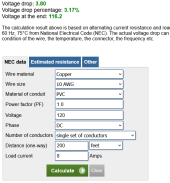tomashubelbauer
New Member
Hi, I have a barn where I have run a small solar system I use to power its lights as well as the occasional power tool. There is a semi-insulated brick room in the barn so I can keep the electronics (solar charge controller, invertor, batteries with internal heaters) there. The barn has a south facing wall which I am currently using to mount the panels but I am running out of unshaded space of this wall. I don't want to fell the tree that shades the rest of the wall so I am thinking about moving my solar array and mounting it on my land.
The spot I have in mind is around 60 or 70 meters away from the barn. That's approximately 200 or 230 ft. It is the closest sunny spot to the barn, other spots are partially shaded by trees.
I am seeking advice on whether it would be better to move the electronics and the batteries also and build an insulated shed where to place it all and then just bury an AC line to the barn or whether it makes more sense to run a DC line from the panel array to my barn and size the array such that I negate the resulting voltage loss. I am in Europe so the AC line would be 230 V if I did build that shed next to the array itself.
Right now I am using 4 175 Wp 20 V panels in series but I am hoping to grow the array in the future. Perhaps it makes sense to run DC now but for 4x the array you'd suggest AC instead? Or would the voltage drop be too much and I should go straight with AC? Something else?
Has anyone dealt with a decision like this and can you share your experience?
The spot I have in mind is around 60 or 70 meters away from the barn. That's approximately 200 or 230 ft. It is the closest sunny spot to the barn, other spots are partially shaded by trees.
I am seeking advice on whether it would be better to move the electronics and the batteries also and build an insulated shed where to place it all and then just bury an AC line to the barn or whether it makes more sense to run a DC line from the panel array to my barn and size the array such that I negate the resulting voltage loss. I am in Europe so the AC line would be 230 V if I did build that shed next to the array itself.
Right now I am using 4 175 Wp 20 V panels in series but I am hoping to grow the array in the future. Perhaps it makes sense to run DC now but for 4x the array you'd suggest AC instead? Or would the voltage drop be too much and I should go straight with AC? Something else?
Has anyone dealt with a decision like this and can you share your experience?



